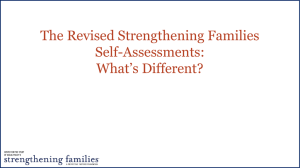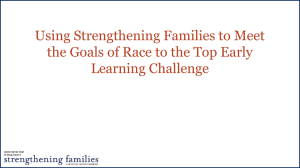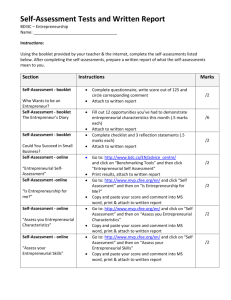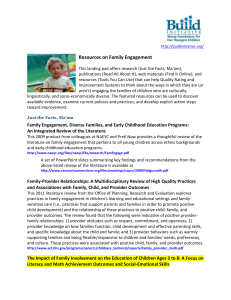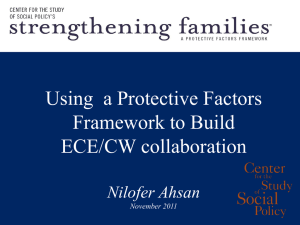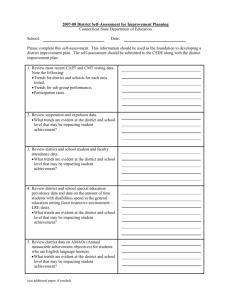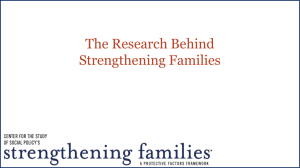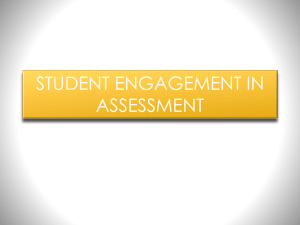PowerPoint presentation about the Program Self
advertisement
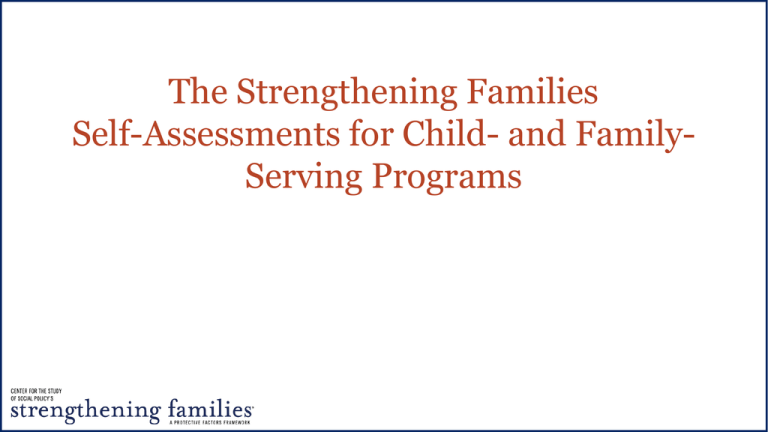
The Strengthening Families Self-Assessments for Child- and FamilyServing Programs About the Self-Assessment • Key implementation tool for programs adopting a Strengthening Families Approach • Helps programs identify “small but significant changes” that enhance their ability to build protective factors • Created based on a national study of exemplary practice • Designed to be used flexibly and to lead you to a concrete action plan • Helps programs identify strengths & areas to focus • Not an evaluation tool but a tool for continuous improvement Four versions for different types of programs Everyday actions Organized around protective factors and the everyday actions that help families build them Five Protective Factor Sections + “Special Circumstances” Sections Special Circumstances Sections • Responding to Possible Child Abuse or Neglect (included in all four self-assessments) • Supporting a Child’s Transitions to School or Other Programs (Center-based ECE and Family Child Care tools) ECE Self-Assessments are Tiered • ECE Center-based – Baseline (i.e., any program) – Mid-level (i.e., more attention to parent engagement) – High (i.e., high attention to parent engagement and support) – Comprehensive Service Programs, for those centers that offer a comprehensive range of supports and services in addition to ECE (e.g., Head Start, family support centers). • Family Child Care – Baseline (i.e., simple day-to-day interactions), – Mid-level (i.e., more intentional focus on supporting and engaging parents) – High (i.e., reflect high level of focus on parent engagement and support— may be most appropriate or easiest to achieve for providers that are themselves receiving systemic support). About the tools’ length • Promotes reflection and continuous improvement • Formatting adds to the length (esp. the tiered versions) • Use the tool to suit your needs, e.g., – One section at a time – One tier at a time (ECE programs) • Best use: part of on-going, active, reflective process Continuous Improvement Online Data System Suite of Tools http://www.mosaic-network.com/gemslive/cssp/ • Registration • Self-Assessment • Action Planning • Parent & Staff Surveys • Reports Completing the Self-Assessment • Create a Self-Assessment team (administrators, practitioners, parents) • Fill-out the Self-Assessment individually • Convene to share and compare responses • Fill out a “group consensus” Self-Assessment Developing an Action Plan Hint – it’s easier to do this using the on-line tools • Identify areas of program strength • Create a sustainability plan to keep these areas strong • Identify practice areas that a majority rated poorly • Decide which should be addressed (1) immediately, (2) over time, or (3) not at all. • Brainstorm plans for improvement. Tracking Progress and Using Results • Programs will be able to document progress over time • Results can become part of an active continuous improvement process • Local and state-level decision-makers can aggregate responses across programs to inform technical assistance and training offerings, target resources where they are needed most, and monitor trends. For More Information • Strengthening Families Self-Assessments: – http://www.cssp.org/reform/strengtheningfamilies/practice/ program-self-assesments • About the Self-Assessments (2-pager): – http://www.cssp.org/reform/strengtheningfamilies/2014/ AboutTheSelfAssessments.pdf • Strengthening Families Online Data Base: – http://www.mosaic-network.com/gemslive/cssp/
